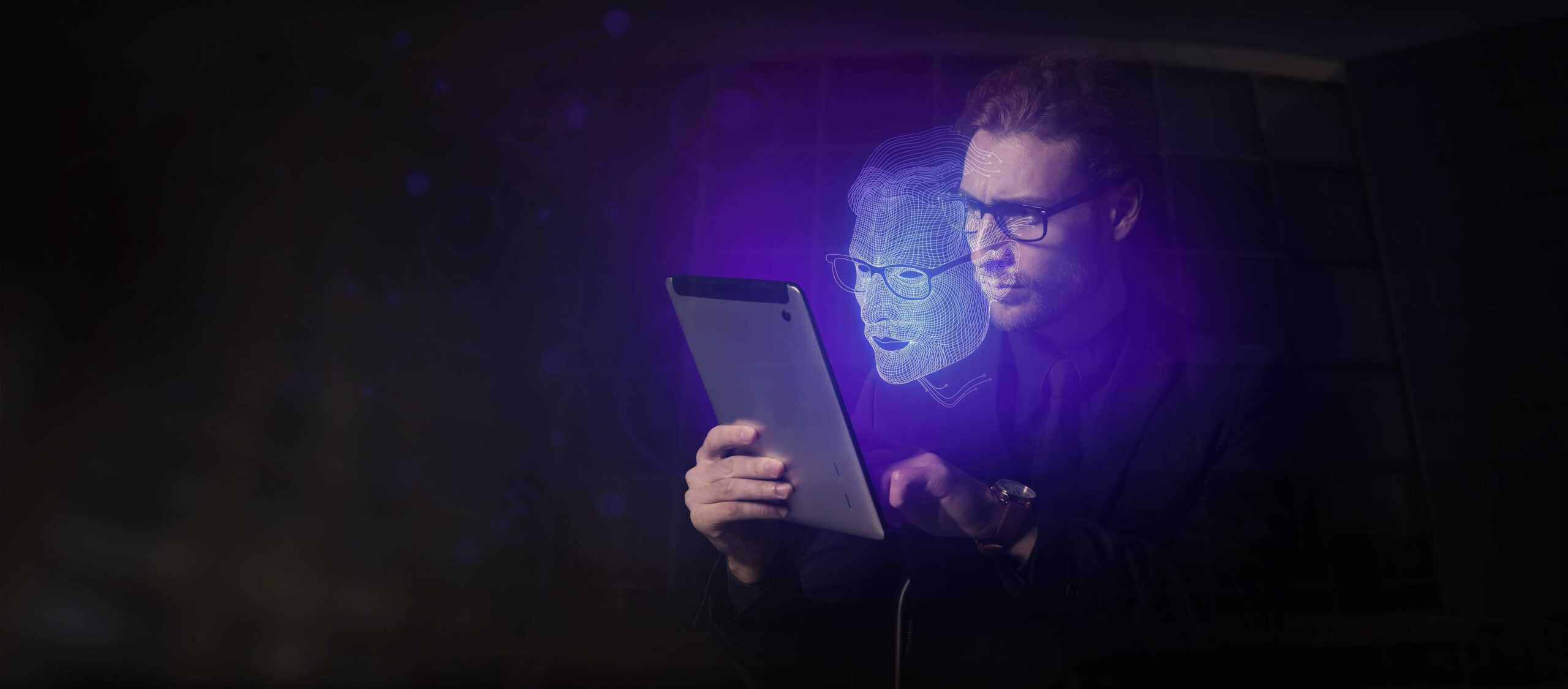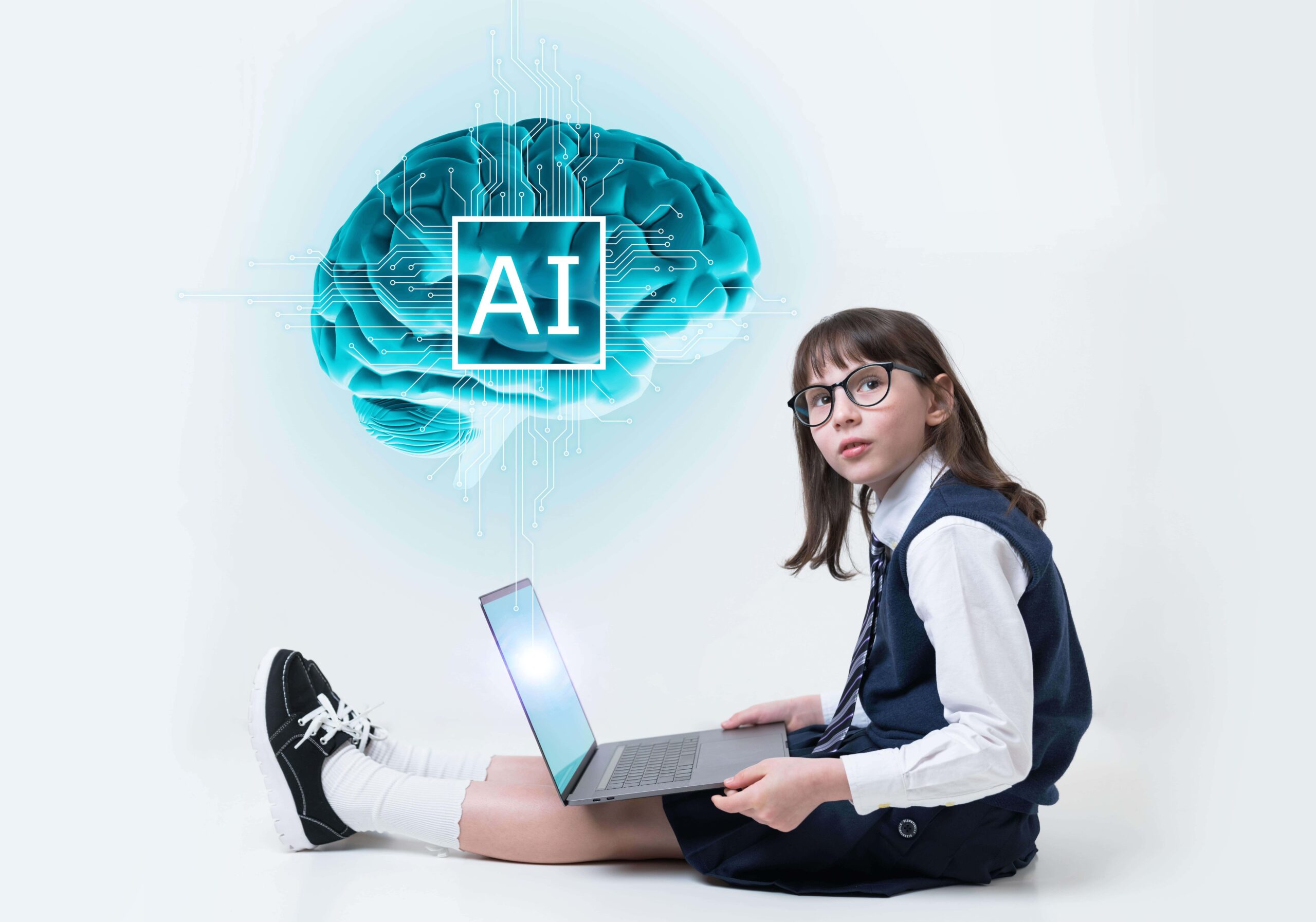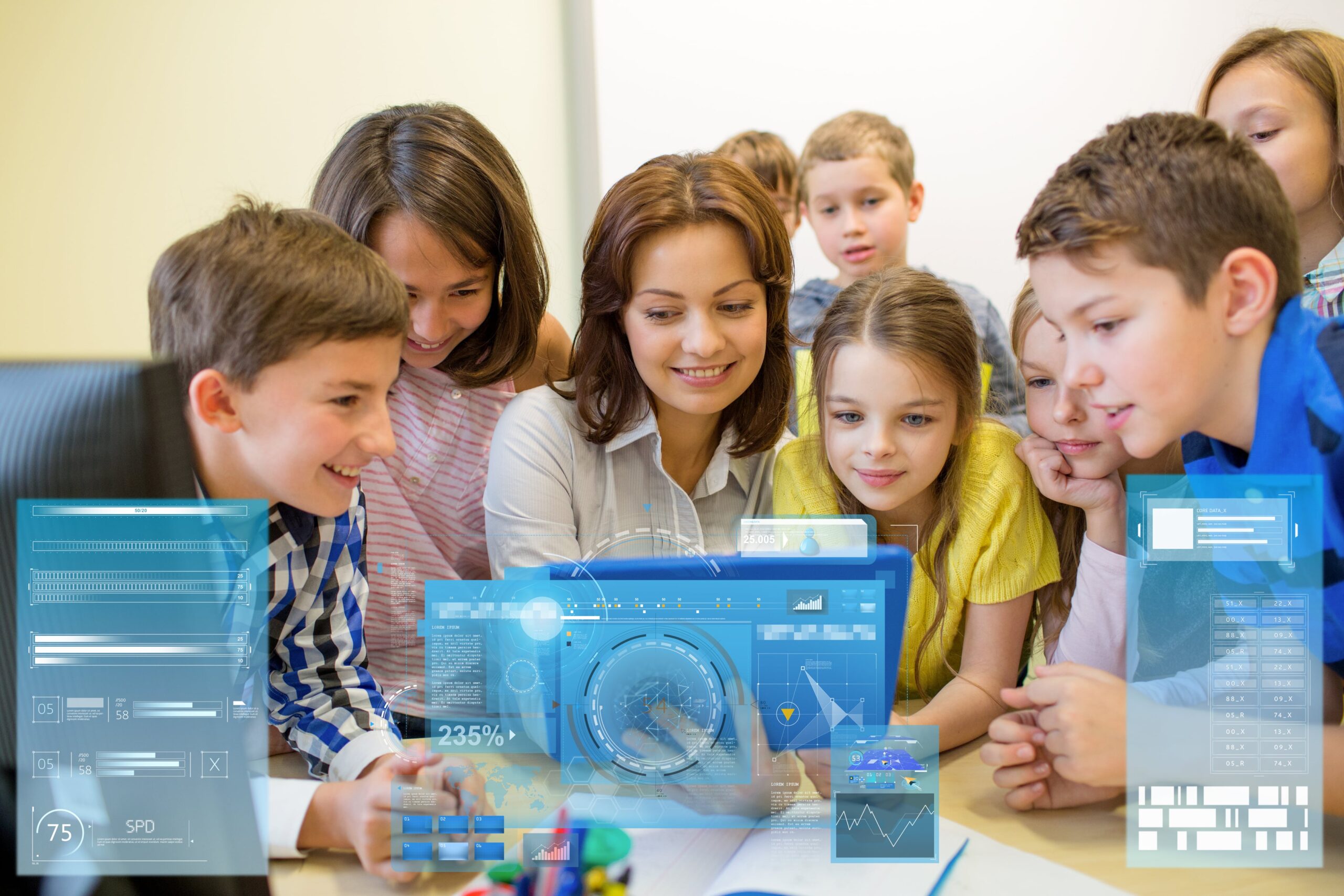- Executive summary
- The challenges in special education
- AI in special education: pros and cons
- How AI can help students with special needs
- A game-changer or potential liability?
- Will teacher shortages accelerate AI adoption?
- Learnings
Executive summary:
While the increased reliance on digital technologies has arguably enhanced the learning experience for most students, it has also created a new set of challenges for our most vulnerable. Special needs students often struggle to process digital media and use traditional interfaces like mice, keyboards, and touch screens. AI has solved countless longstanding problems in recent years, so how can it help here?
- Envision Glasses are AI-powered smart glasses that can help people with visual impairments ‘see’ and interact with the world around them.
- SIGN uses machine learning and AI algorithms to translate sign language into speech and vice versa in real-time.
- According to the US Department of Education, there were 7.8 million children and young adults with disabilities in the United States in 2021.
- A 2023 survey by NCES found that 77% of US public schools had difficulties filling special education teacher positions.
- “AI is a tool, not a replacement for instruction,” says Julian Dean, a children’s resource teacher at East Chapel Hill High School.
- “I think something interpersonal is lost when you only have contact with a machine,” says Thom Axelsson, associate professor in educational science at Malmö University
Despite the concerns raised by some industry experts, the adoption of AI in special education is likely to increase in the upcoming years, driven in large part by severe shortages of skilled teachers. The challenge, then, will be to integrate the technology in a way that will ensure it improves the quality of education—and not the opposite.
The challenges in special education
While education is a fundamental human right, many students still face significant hurdles in their academic journeys. This is particularly true for those with special needs, who often struggle to keep pace with their peers. With elaborate forms of digital media taking on an increasingly prominent role in classrooms, this problem has become even more pronounced.
Educational technology typically relies on visual and textual elements. These can be incredibly challenging or sometimes even impossible for students with visual or hearing impairments to process, severely restricting their access to quality education. The issue is exacerbated further by traditional digital interfaces, such as mice, keyboards, and touch screens, which are rarely designed with special needs students in mind.
This is where artificial intelligence (AI) technology enters the picture. AI-powered tools have the potential to level the playing field by enabling such students to interact with educational content in ways that feel more natural and intuitive to them. In the following sections, we will take a closer look at how AI can deliver a more personalised learning experience and explore what it means for the future of special education.
AI in special education: pros and cons
AI offers numerous benefits to special education students and teachers alike, but could it ever fully replace the human touch?
There are numerous ways in which AI can enhance the learning experience for students with special needs. The most notable advantage of AI-powered tools is that they allow for increased personalisation, enabling teachers to tailor the educational content in accordance with each student’s unique learning needs. AI can also keep track of student performance over time, identify their strengths and weaknesses, and automatically adjust the content based on their current state of progress. This can help make the learning process more enjoyable for students with special needs, resulting in better learning outcomes.
AI could also facilitate the development of a new generation of assistive technology. Think speech recognition software that allows students with speech impairments to communicate more effectively or AI-powered tools that can translate speech into text and vice versa in real-time, enabling students with visual and hearing impairments to participate fully in classroom activities. Another area where AI could prove beneficial is behavioural analysis. Schools could use it to monitor and analyse student behaviour, making it easier for them to identify students with potential issues and provide them with the support they need.
However, there are also challenges associated with the integration of AI that need to be taken into account. One example is data privacy: AI tools generally require access to sensitive student data in order to be effective. Schools must therefore be very careful about what kind of data they feed into AI tools and implement strict security measures to ensure that it doesn’t fall into the wrong hands. It’s also important that any content produced by AI is reviewed by a human to ensure it aligns with the student’s unique circumstances and doesn’t inadvertently introduce any biases. As advanced as AI tools may be, they cannot fully replace the emotional intelligence, intuition, and empathy a human teacher brings.
“AI is a tool, not a replacement for instruction.”
Julian Dean, a children’s resource teacher at East Chapel Hill High School
How AI can help students with special needs
AI tools can help students with special needs overcome their limitations and participate fully in classroom activities.
There is a growing number of AI-powered tools out there that can help students with special needs improve their academic performance. Developed by tech startup Aisles, SIGN is a verbal and sign language interpreter that uses AI to help sign language users communicate with those who don’t know their language. Using a smartphone’s cameras, speaker, and microphone, it detects when a user initiates a conversation and converts sign language into speech in real-time. It also works the other way around, translating spoken words into sign language. SIGN can also be integrated with another tool developed by Aisles, an AI teaching system called LEARN, enabling teachers to create personalised lessons for students with hearing impairments.
Dysolve is a groundbreaking AI-powered tool designed to help students with dyslexia overcome their learning disability. The brainchild of linguist and cognitive scientist Dr Coral Hoh, the tool uses AI to identify exactly where language processing errors occur in a student’s brain, then builds interactive games to help the student correct those errors. Each game lasts between one and three minutes and is only used once. During the next session, the AI reassesses the student’s progress and builds a new game tailored specifically to their unique needs. The process continues until the student achieves 90-100% reading efficiency. This can take as little as a year or two, according to Hoh. Best of all, the gains are permanent, as Dysolve changes the way the student’s brain processes language.
Solutions also exist for those who are visually impaired. For example, Envision Glasses is a pair of smart glasses that allows people who are blind or have low vision to ‘see’ the world around them. Equipped with a camera and speaker, the glasses can process all sorts of visual information and relay it back to the wearer as speech. They can read text across over 60 languages, describe the wearer’s surroundings, detect the intensity and direction of light sources, and even recognise faces. There is also a generative AI feature that allows wearers to ask questions in natural language about the text they are reading. While the glasses do not have any uptake in special education at the time of writing, their value in these other contexts should translate into the classroom as well.
Bridge AI is an innovative AI-driven learning system designed to help teachers, therapists, and parents improve the educational experiences of students with special needs. Developed by Hong Kong-based special education school Bridge Academy in collaboration with Lenovo, the system uses AI to continuously track student performance and suggest appropriate tasks to help students improve their learning outcomes. Trained on thousands of hours of classroom footage, the AI can identify various human gestures and expressions, allowing it to spot students who may be struggling to complete their assignments. Once it does, it notifies the teacher and offers suggestions on how they can personalise instruction to meet the student’s unique learning needs.
A game-changer or potential liability?
While experts agree that AI can have some promising applications in special education, they warn that the technology should never be viewed as a replacement for human expertise.
Many experts currently exhibit caution around the use of AI in special education. While they admit that the technology can be useful for certain purposes—such as writing reports or creating personalised lesson plans—teachers need to carefully review its output before they present it to their students. “You can’t just take what it gives you and use it the way that it is,” says Julian Dean, a children’s resource teacher at East Chapel Hill High School. “You have to take it as a starting point and know that you probably need to modify it…you have to make sure that it is appropriate for your actual individual student.”
If schools decide to implement AI tools in special education, they must remember that it cannot replace human expertise. “AI might be able to create any number of materials and resources, but teachers need to know how it supports their students and their instruction, and any changes or modifications that might need to be made to the generated content,” explains Sara Flanagan, a special education faculty member at the University of Maine. “AI is a tool, not a replacement for instruction.”
Some experts have voiced concerns about the narrative surrounding AI’s implementation in classrooms. “I’m concerned about how AI is being presented right now to educators, that it’s this magical tool,” remarks Julie Tarasi, a special education teacher at Lakeview Middle School. “And I don’t think that the AI literacy aspect of it is necessarily being shared to the magnitude that it should be with teachers.” Tarasi also highlights privacy issues, warning teachers to be extremely careful about what kind of information they enter into AI tools. “If you wouldn’t put it on a billboard outside of the school, you should not be putting it into any sort of AI.”
There are also some who believe a growing reliance on AI could negatively impact the social aspect of education. “I think something interpersonal is lost when you only have contact with a machine,” says Thom Axelsson, associate professor in educational science at Malmö University. “There is a caring part of the school and education that may be lost in all forms of digitalisation. Sometimes people talk more about the pedological elements of school rather than the social part. The social part of the school may be forgotten even more because of AI.”
Will teacher shortages accelerate AI adoption?
The majority of schools are struggling to fill special education teacher positions, prompting a growing interest in AI tools.
It should be noted that a not-insubstantial number of students could benefit from AI tools. According to the US Department of Education, 7.8 million children and young adults with disabilities received specialised services under the Individuals with Disabilities Education Act (IDEA) in the United States in 2021, which represents a 2% increase from the previous year. Of those, 32% had a specific learning disability, 19% had a speech or language impairment, and 15% had some other health impairment that had a negative impact on their academic performance, as per the latest data from the National Center for Education Statistics (NCES).
Providing these students with the education they need has proven challenging, though. A 2023 survey of US public schools conducted by NCES found that 86% of schools experienced difficulties hiring teachers, and 45% reported issues with understaffing. When asked which job openings they found most difficult to fill, 77% of schools highlighted those around special education. The majority of respondents—about 66%—blamed the lack of qualified candidates for their difficulties in filling these positions. In some cases, schools have even resorted to hiring teachers who lack the necessary qualifications. According to a 2023 report by the US Department of Education, about 8% of teachers who work with children with special needs in US schools today are not fully certified.
Another compounding factor is that special education teachers are 72% more likely to change schools than their colleagues in general education, reveals a 2019 survey conducted by the National Center for Education Evaluation and Regional Assistance (NCEE). They were also 11% more likely to leave the profession altogether. In response to these challenges, 16% of schools or districts have already implemented AI tools into their special education classes, according to an April 2024 survey by EdWeek Research Center. A further 17% of respondents said they were actively exploring them with hopes to use them in 2024/25, while 38% said they were at least considering their usage. On the other hand, 30% said they had no plans to use AI tools with students with special needs.
Learnings:
While it may be too early to draw any definitive conclusions, the integration of AI into special education does exhibit the potential to enhance the learning experiences of special needs students. Simultaneously, it raises concerns related to data privacy, bias, and AI literacy that need to be carefully considered before the technology is brought into the classroom.
- AI offers a potential solution to severe shortages of special education teachers.
- AI can help teachers provide their students with more personalised learning experiences aligned with their individual needs.
- It can also help schools identify students with learning disabilities at an early age and deliver a more timely intervention.
- Many solutions rely heavily on student data to function, which could raise serious privacy concerns for schools.
- The lack of AI literacy among teachers could also prevent a wider adoption of AI in the short term.
As we move forward, we must ask ourselves: How do we harness the power of AI to create more inclusive educational environments without losing the human touch that is so vital to learning? And what safeguards need to be put in place to ensure that AI tools in special education truly serve the best interests of the students they are designed to help?




